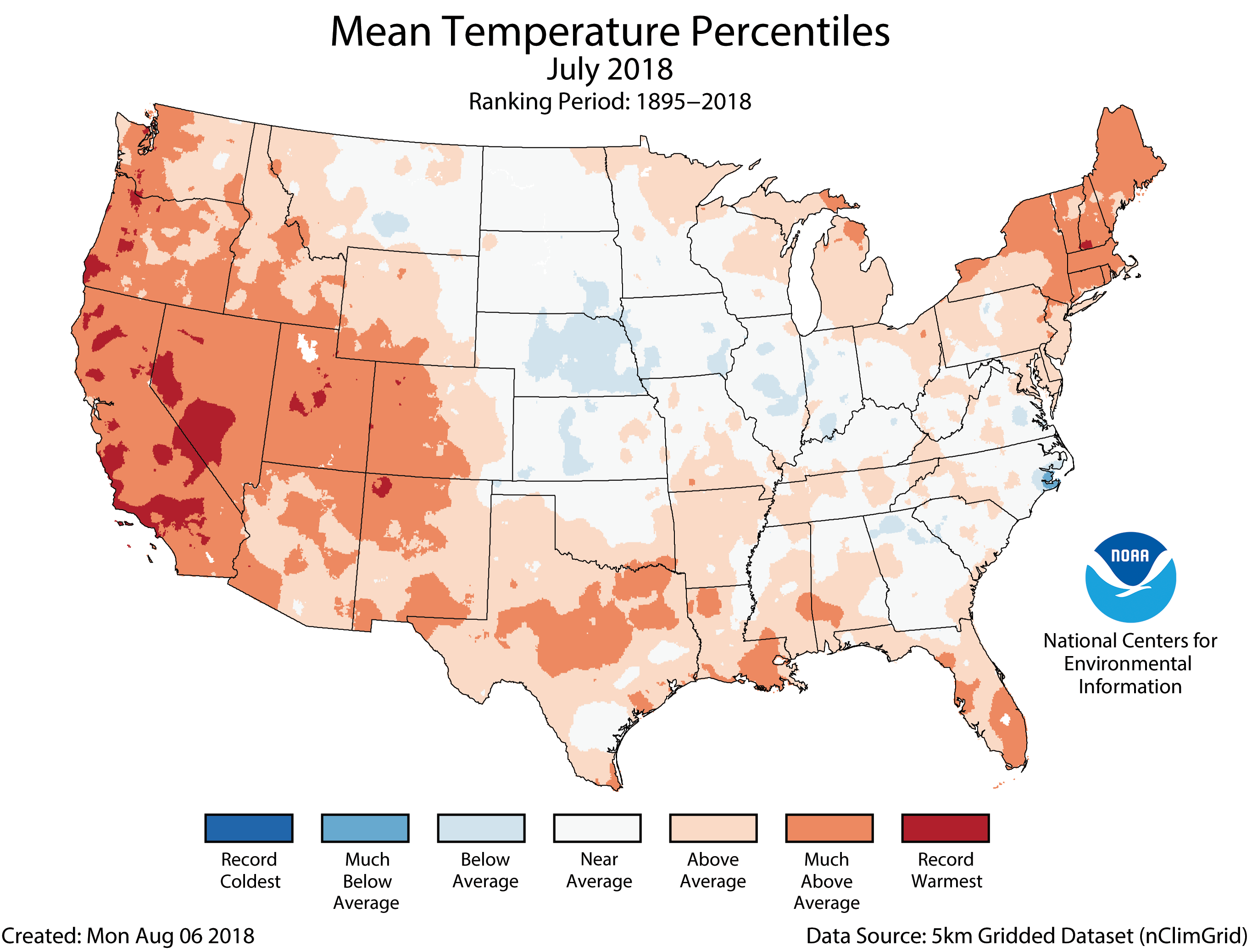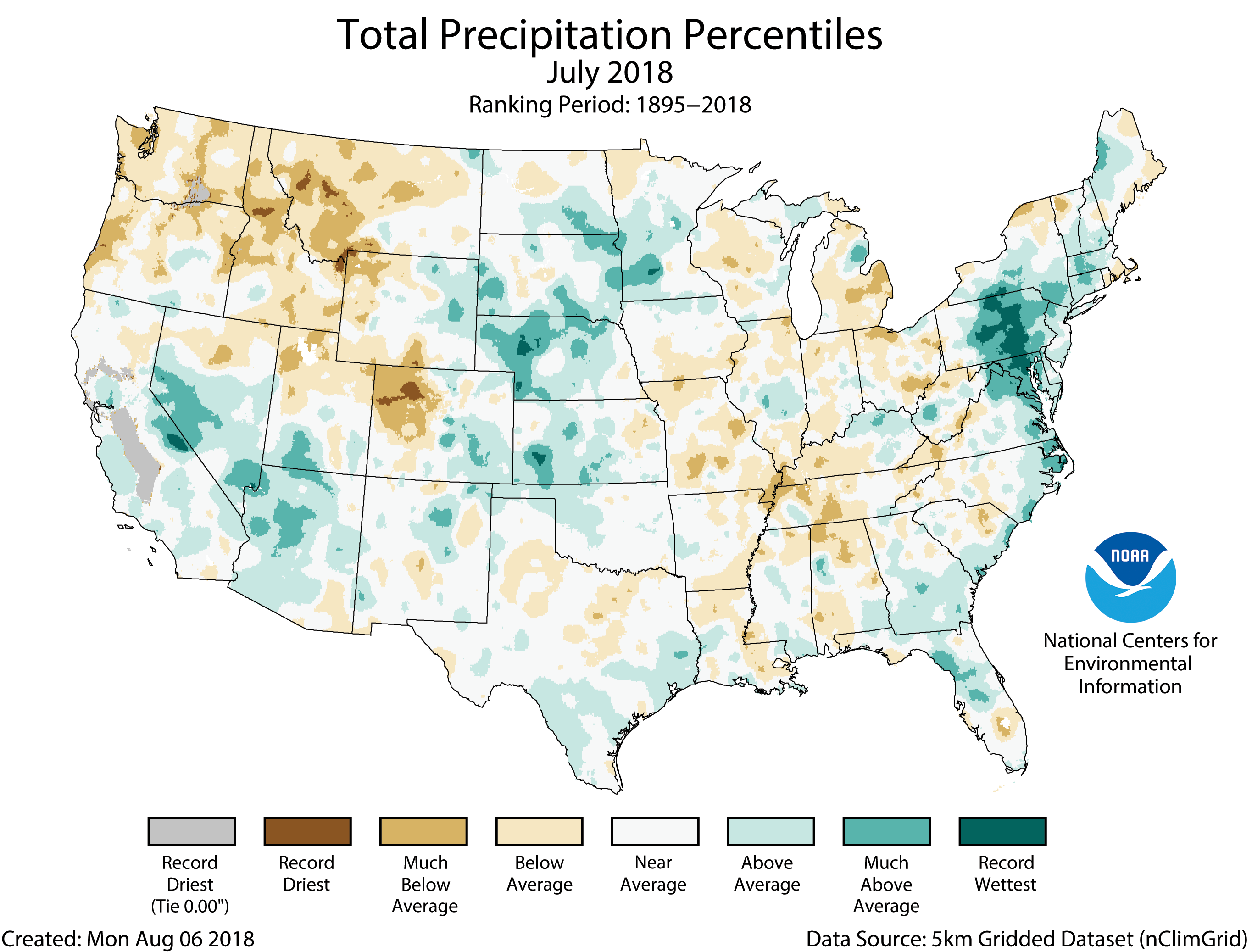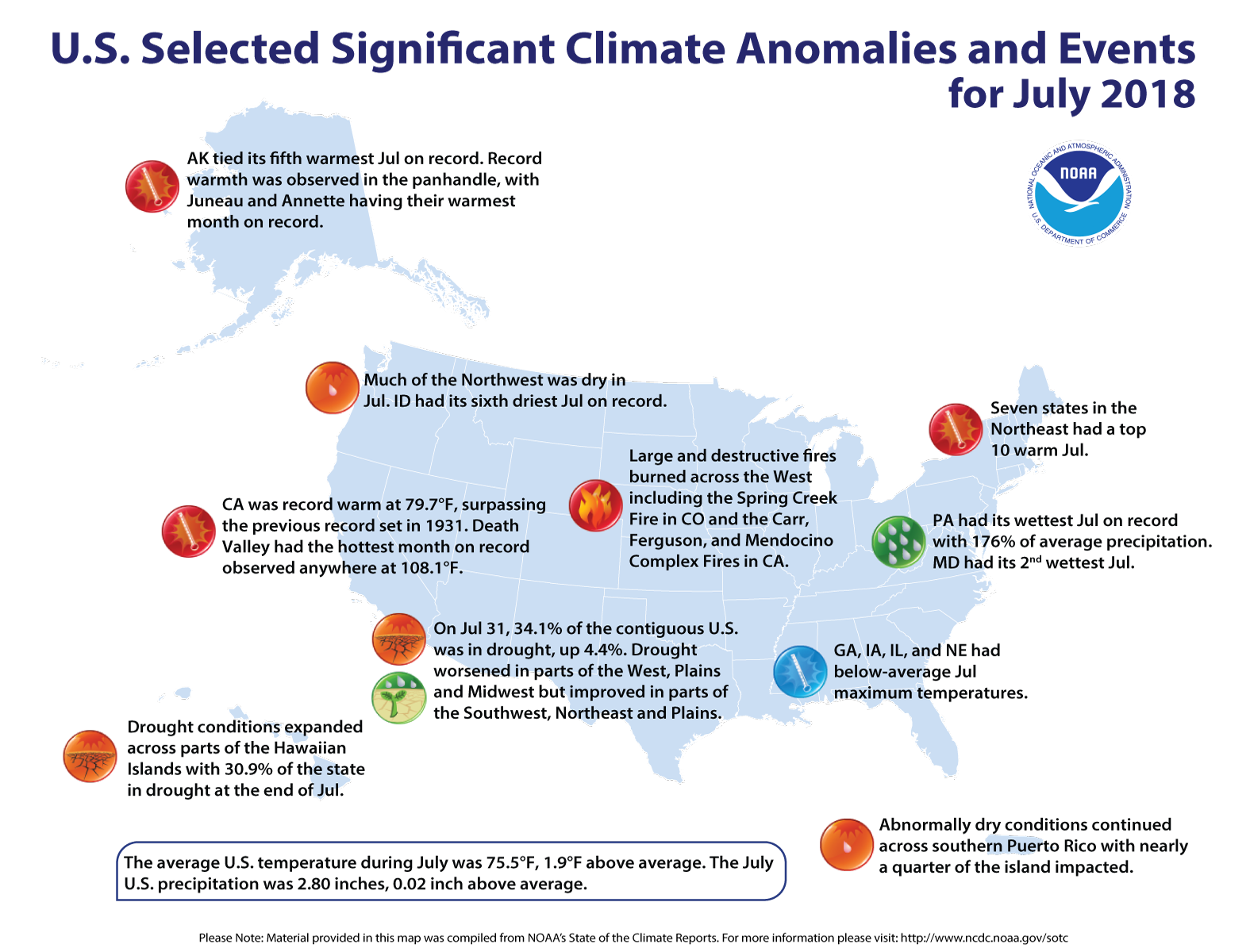July National Recap - Heat and Fires
Let’s see how July 2018 and the year to date fared in terms of the climate record:
Climate by the numbers
July 2018

The average July temperature across the contiguous U.S. was 75.5 degrees F (1.9 degrees above average), tying 1998 as the 11th warmest July in the 124-year record.
For California, July was off the charts: The state saw its hottest July and hottest month on record with an average temperature of 79.7 degrees F.
The average precipitation for July was 2.8 inches (0.02 of an inch above average), which ranked near the middle of the record books. An active monsoon season brought a parade of heavy thunderstorms to the Southwest, while parts of Pennsylvania and Maryland endured record and near-record precipitation, respectively.

Year to date // January through July 2018
The average U.S. temperature for the year to date (January through July) was 53.1 degrees F (1.9 degrees above normal). The period from May through July was the warmest on record at 70.9 degrees F (3.4 degrees above average).
It was the 11th warmest YTD on record with an average precipitation total of 18.65 inches, (0.56 of an inch above average).
More notable climate events

-
National park town set new world record as hottest place during hottest month : At 108.1 degrees F, Death Valley, California, had the hottest averagemonthly temperature for any recording station in the world. Seven states in the Northeast experienced a Top-10 warmest July. Alaska had its fifth warmest July on record.
-
Firefighters battled raging wildfires: Massive wildfires – the Carr, Ferguson and Mendocino Complex fires – torched the California landscape, causing loss of life and property. As of August 7, the Mendocino Complex fire has grown to become the largest in the state's 'modern history,' offsite linkas reported by the LA Times. Wildfires also burned across 15 other states, including Alaska.
-
Handful of states were cooler than normal: Georgia, Iowa, Illinois and Nebraska had below-average July daytime temperatures.
-
Drought got worse: Overall, 34.1 percent of the contiguous U.S. was in drought by the end of July, up from 29.7 percent at the start of the month.